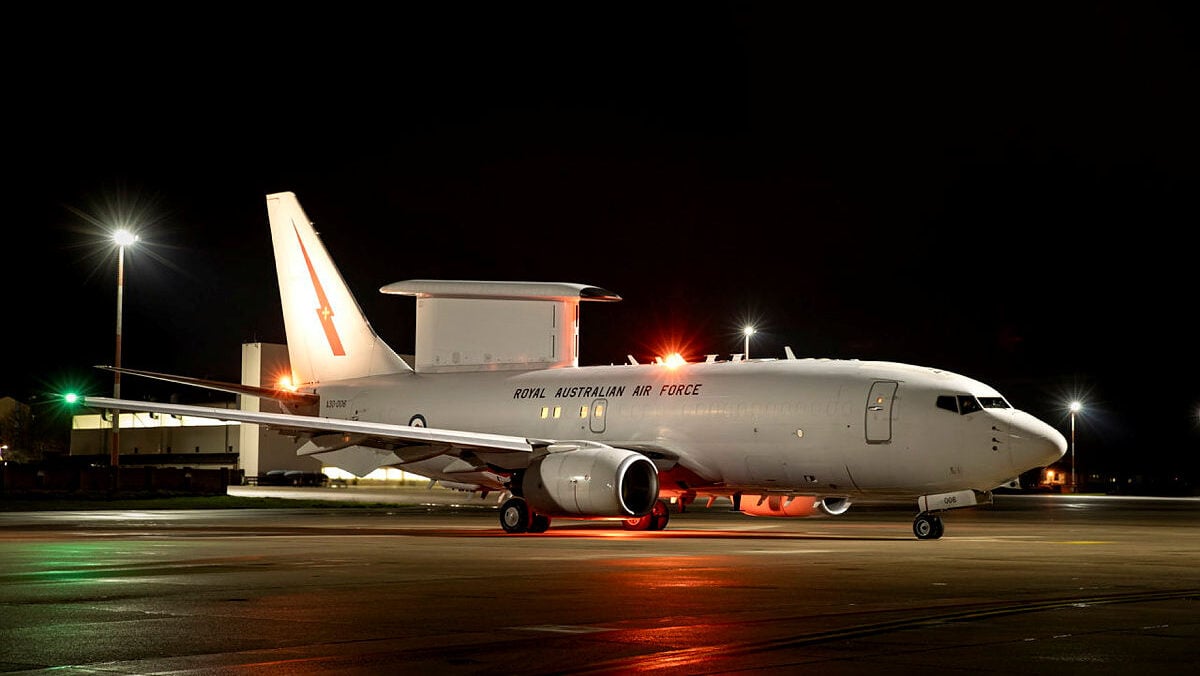
Updated on 7/20/24 at 7:48 a.m. ET with comments from Dan Gillian of Boeing.
RIAT 2024 — Following a price dispute that dragged out negotiations, the US Air Force has reached a deal with Boeing to produce rapid prototypes of the E-7 Wedgetail, according to service Secretary Frank Kendall.
The Air Force intends to definitize final terms for the contract in August, Kendall said in a briefing with reporters at the Royal International Air Tattoo (RIAT) air show. Kendall did not share details of the agreement, but stated that the service “got to a reasonable price point” after bringing in Shay Assad, the Pentagon’s former longtime director of defense pricing, to broker a deal with Boeing.
Andrew Hunter, the service’s top acquisition official, said Boeing and the Air Force were eventually able to hammer out a deal due to the service’s investment in upgrading mission systems aboard the Wedgetail that will ultimately make it more attractive to potential international customers.
“There is credit here for Boeing and the suppliers. They did really buckle down and get their pencils out and sharpen them and do a good job to bring the cost of the rapid prototyping program down. That’s what we asked. And that’s what they did,” he said. “Why did they do that? They did that because there is an extensive market for E-7 going forward not only with the Air Force, but also with NATO and other partners. And so the business case was there for them to lean forward and get over the hump, if you will.”
Dan Gillian, Boeing’s vice president of mobility, surveillance and bombers, also declined to comment on the terms of the agreement, telling reporters that the parties achieved a “fair price” for the government as well as the “actual costs we think it will take to execute this program on time.”
The Air Force originally awarded Boeing a contract worth up to $1.2 billion to kickstart work on the Wedgetail in 2023, though the deal was signed as an undefinitized contract action as the two parties worked to come to terms. The agreement announced today covers two rapid prototypes, and the Air Force eventually expects to field a fleet of 26 aircraft.
Amid negotiations, Kendall earlier this year turned the heat up on Boeing, telling reporters that the service was “having a hard time” nailing down a price with the planemaker. Complications in ironing out the deal caused the Air Force to postpone procurement funding for the program, though Hunter previously said that he still expects Boeing could deliver the first prototype plane in fiscal year 2027.
According to Hunter, Air Force officials originally believed that their requirements would closely mirror those for E-7s acquired by the United Kingdom. But as the process went on, the requirements diverged, complicating the radar plane’s development and contract negotiations. Hunter also previously noted that it’s “not surprising” Boeing is “trying hard to do their homework” to avoid getting trapped in troublesome agreements like those that have contributed to losses for the company’s troubled defense unit.
During the course of negotiations, the Air Force’s requirements evolved to include US-specific features including open mission systems architecture, improved satellite communications and enhanced GPS, which will become part of the baseline Wedgetail going forward, Gillian said.
Boeing recently completed the final design review for the Air Force’s E-7 program, and is already building the first 737 Next Generation jetliner that will be converted into the service’s Wedgetail prototypes. That jet will fly in 2025 before being inducted for modifications the same year, Gillian said.
Ultimately, Boeing sees total sales of about 50-70 Wedgetails, including the Air Force’s planned program of record as well as other E-7 orders that have been booked or delivered, Gillian said.
A replacement for the aging E-3 Sentry, the E-7 is poised to be the Air Force’s newest eye in the sky. Using tools like its distinctive “top hat” radar manufactured by Northrop Grumman, the Wedgetail can gather tracking information on targets that on-board personnel can then use to help manage a battlespace. Boeing’s vision for the E-7 also includes controlling the Air Force’s forthcoming drone wingmen known as Collaborative Combat Aircraft.
Reaching a deal with the Air Force adds another win for the Wedgetail, which recently prevailed in a competition to replace E-3s for NATO. Demand for the platform has even prompted Boeing to aim for an annual output of six Wedgetails near the end of the decade.